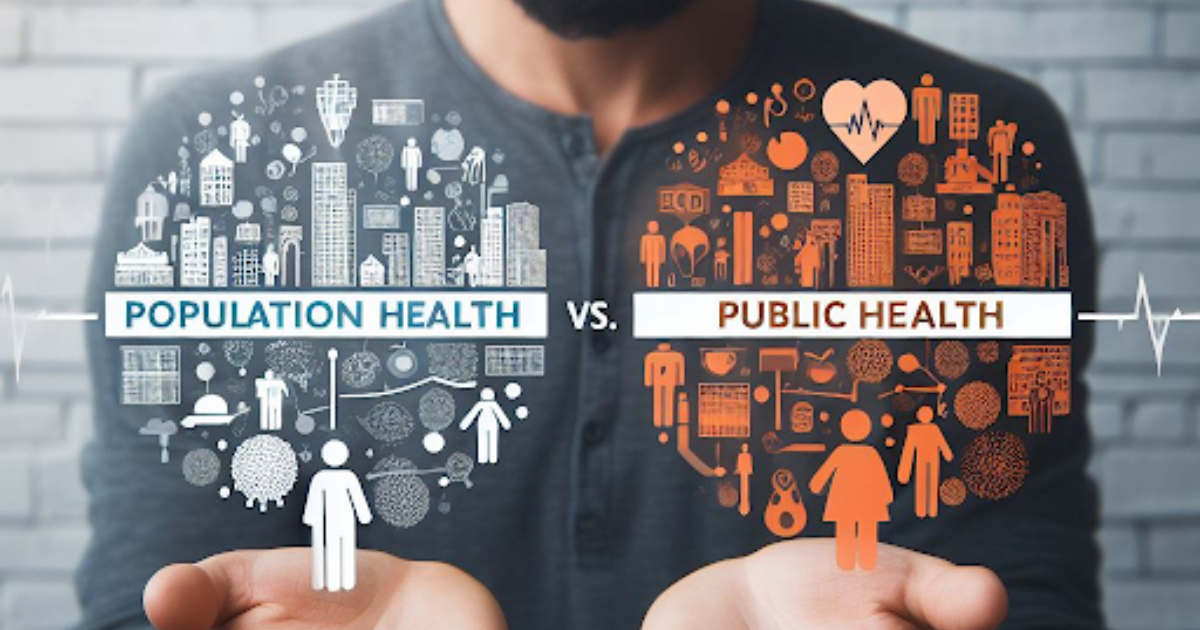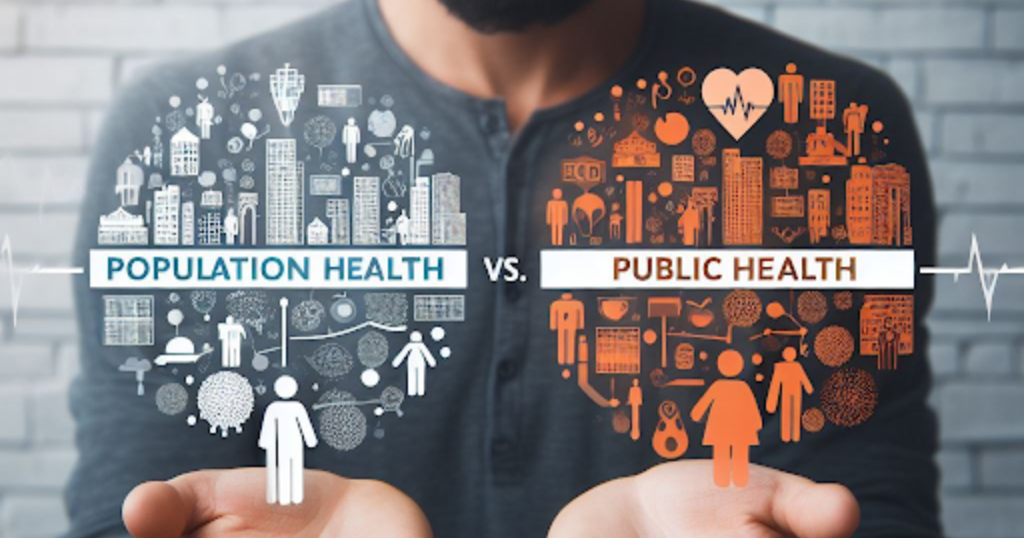
In this article, we will explore the disparities between population health and public health. By shedding light on their distinctions, we aim to provide a clear understanding of these two essential fields.
Key Differences Between Population Health and Public Health
Population health and public health are two distinct concepts that focus on improving the health and well-being of individuals and communities. While both share similar goals, there are key differences between them. Population health takes a broader approach, considering the health outcomes of entire populations and the factors that influence them. Public health, on the other hand, focuses on the health of the public as a whole and aims to prevent and control diseases and promote health through various interventions. While population health encompasses public health, it also includes a wider range of factors such as social determinants of health, individual behaviors, and healthcare delivery systems.
The Primary Focus of Population Health and its Comparison to Public Health
The primary focus of population health is to improve the health outcomes of entire populations. It takes into account various factors that influence health, including social determinants of health, individual behaviors, and healthcare delivery systems. Population health aims to identify and address health disparities and inequities, promote health equity, and improve the overall health and well-being of communities. Public health, on the other hand, primarily focuses on disease prevention and control, health promotion, and the overall health of the public. While both population health and public health share similar goals, population health takes a broader approach by considering a wider range of factors that contribute to health outcomes.
Factors Considered in Population Health that May Not be Emphasized in Public Health
Population health takes into consideration a wider range of factors that may not be emphasized in public health. While public health primarily focuses on disease prevention and control, population health considers social determinants of health, individual behaviors, and healthcare delivery systems. Social determinants of health, such as socioeconomic status, education, and access to healthcare, play a significant role in shaping health outcomes. Population health also examines individual behaviors, such as lifestyle choices and health behaviors, and their impact on health. Additionally, population health looks at the healthcare delivery system as a whole, including access to care, quality of care, and healthcare disparities. These factors are important considerations in population health and may not receive the same level of emphasis in public health.
Role of Prevention and Promotion in Population Health vs. Public Health
Prevention and promotion play important roles in both population health and public health. However, the focus and approach may differ between the two. Public health places a strong emphasis on disease prevention and control through interventions such as vaccinations, screenings, and health education campaigns. Public health aims to reduce the incidence and prevalence of diseases and promote healthy behaviors to improve the overall health of the public. Population health also recognizes the importance of prevention but takes a broader view. It focuses on preventing diseases and promoting health through interventions that address social determinants of health, individual behaviors, and healthcare delivery systems. Population health interventions may involve policy changes, community engagement, and collaboration between various sectors to promote health and prevent diseases.
Examples of Population Health Initiatives Highlighting Distinctions from Public Health
There are several examples of population health initiatives that highlight the distinctions from public health. One example is the implementation of policies to address social determinants of health, such as housing and income inequality. These policies aim to improve the overall health and well-being of populations by addressing the underlying factors that contribute to health disparities. Another example is the focus on community engagement and collaboration in population health initiatives. These initiatives involve working with community members, organizations, and stakeholders to identify and address health needs and promote health equity. Additionally, population health initiatives often involve interdisciplinary approaches, bringing together professionals from various sectors to address the complex factors that influence health outcomes. These examples demonstrate how population health goes beyond traditional public health approaches by considering a wider range of factors and employing comprehensive strategies to improve population health.
Addressing Health Disparities and Inequities
Addressing health disparities and inequities is a key focus of both population health and public health. However, population health places a stronger emphasis on this aspect. Population health aims to identify and address the underlying factors that contribute to health disparities, such as social determinants of health, socioeconomic status, and access to healthcare. It seeks to promote health equity and ensure that all individuals and communities have equal opportunities for good health. Public health also recognizes the importance of addressing health disparities but may not focus as extensively on the underlying determinants. Public health interventions primarily target disease prevention and control, aiming to reduce the burden of diseases on the population. While both population health and public health aim to improve health outcomes and reduce health disparities, population health takes a more comprehensive approach by considering a wider range of factors and employing strategies that address social determinants of health.
Key Challenges Faced by Population Health in Comparison to Public Health
Population health faces several key challenges in comparison to public health. One challenge is the complexity of addressing social determinants of health and other underlying factors that influence health outcomes. These determinants are often deeply rooted in social, economic, and environmental systems, making them difficult to address and change. Another challenge is the need for interdisciplinary collaboration and coordination between various sectors, such as healthcare, education
Conclusion:
In conclusion, while population health and public health share similar goals of improving health outcomes, they differ in their approaches and focus. Population health takes a broader view, considering the health of entire populations and addressing social determinants of health, individual behaviors, and healthcare delivery systems. Public health primarily focuses on disease prevention and control for the overall health of the public. By understanding these distinctions, we can better address the complex factors that influence health outcomes and work towards improving population health.






